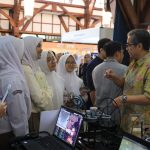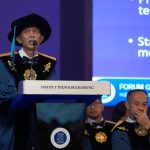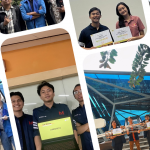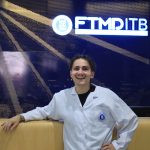Research Groups (KK)
To manage researches, the Faculty of Mechanical and Aerospace Engineering (FMAE) ITB has seven (7) research groups (Kelompok Keahlian/ KK) as follows:
The Mechanical Design group conducts research and development in the fields of design, structural analysis and machine material selection. This research group has established strong relationships with several industrial sectors including oil & gas, mining, automotive, railroad, manufacturing and even the health care sector. The collaboration carried out by this group is not only with national organizations but also with various international organizations related to education, research and development of mechanical design.
The main research topics within this group are,
a) design of mechanical components and equipment,
b) experimental stress analysis,
c) dynamics and vibration,
d) fracture mechanics,
e) rail and guided vehicle technology,
f) biomechanics.
Specific research fields currently being actively undertaken by this group include Mechanical Equipment; Component Design; Experimental Stress Analysis; Predictive Maintenance Technology: Vibration Analysis, Signal Processing, Fracture Mechanics; Railroad Vehicle Technology: Impact Energy Absorber, Composite Brake, Collision Feasibility, Rail dynamics; Biomechanics: Gait Analysis, Dental Biomechanics, Prosthetic Design, Collision Injury; Tasks at risk; Heavy Machinery and Material Handling Equipment.
In the Energy Conversion group, the research consists of the following main topics:
(a) Thermo-fluid technique,
(b) Power generation engineering,
(c) Cooling technique,
(d) Computational fluid dynamics,
(e) New and renewable energy.
Each of the main topics focused on more specific applications, i.e., micro-gas turbines based on turbochargers, low cost solutions to improve the performance of dual-fuel vehicles, non-combustible hydrocarbon chillers as alternative coolants for energy conservation in cooling systems, study of diesel engine characteristics spray using CFD, and production of biofuels from biomass.
3. Material Science and Engineering
In the Materials Science and Engineering group, all aspects related to the structure, properties and characteristics of matter and their interactions are studied. With this provision, the material can be engineered so that it is superior and highly efficient.
Research on Materials Science and Engineering is categorized based on the type of material studied, namely metals, composites, polymers, ceramics, biomaterials and recycled materials. In the 2010-2025 period, this group implementing a new approach and thinking: Problem Solving and Future Oriented Development. Development of Materials Science and Engineering is aimed at solving problems and challenges in the industry, health, defense & security and environment. Research is also focused on developing products for various purposes, i.e., construction; Sensors, Storage and Catalysts; Filters, Membranes and Insulation; BioMaterial Engineering.
4. Mechanical Production Engineering
The Mechanical Production Engineering group conducts research on the following main topics: Production Systems; Robotics and Automation; Machine Tools Design; Manufacturing Process; Industrial Metrology; Creativity and Innovation in Manufacturing Engineering.
Each of the main topics in this group is focused on specific applications such as product modeling and production facilities, autonomous production systems, robotic tele-operation, machine tool performance testing, piezoelectric based microacuators, and product quality control.
5. Aircraft Design, Operation and Maintenance
The Aircraft Design, Operations and Maintenance group has the goal and mission of increasing safety, efficiency and minimizing the social impacts (especially on the environment) of global air transport through innovations in control, optimization, system design and analysis. The objective and mission of this group are done by conducting research within the scope of the main topics:
a) aeronautical product design,
b) development of an unmanned aerial vehicle system (UAV),
c) air transport engineering and operations,
d) air transport modeling and analysis,
e) development of flight engineering simulators,
f) airline reliability and maintenance program engineering,
g) aviation safety analysis,
h) airport system analysis, and
i) propulsion and turbomachinery.
The focus of these main topics includes national glider design, human powered aerial vehicles, UAV development, airline fuel conservation, airline cost and revenue analysis, airline fleet planning studies, modeling and simulation of departure/ arrival traffic at airports, turbine engine design and analysis.
The Flight Physics group deals with the aspects of physical phenomena and the control of a flying vehicle. This group conducts research on the following main topics: Fluid Dynamics; Flight Dynamics and Control Systems; Astrodynamics.
Each main topic is focused on specific applications such as vortex element method (VEM) development, system development and particle image velocimetry (PIV) dynamics, influence of wing configuration on wing aerodynamic performance, rocket propulsion and dynamics, development of aircraft engineering simulators, control applications on systems dynamics, and space mission reconstruction and analysis.
A lightweight structure is a structure that has significant savings in terms of weight compared to normal structures, but with the same strength, so that the structure becomes more efficient. This advantage makes the concept of lightweight structures widely applied in various fields, including aerospace or flying vehicles. The development of lightweight structures study in FMAE is always adjusted to the latest developments in the world. The Lightweight Structures group conducts research with the following main topics:
(a) Aircraft structural damage tolerance,
(b) Numerical methods in structural analysis,
(c) Structural analysis and testing,
(d) Digital Image Correlation (DIC),
(e) Environmentally friendly composite materials, and
(f) three-dimensional construction for industrial components.
Each of the main topics focuses on more specific applications, such as calculating crack growth and predicting the residual strength of aircraft structures, finite element analysis including non-linear analysis, bending analysis and testing of thin wall structures, and experimental methods of structures using DIC.







